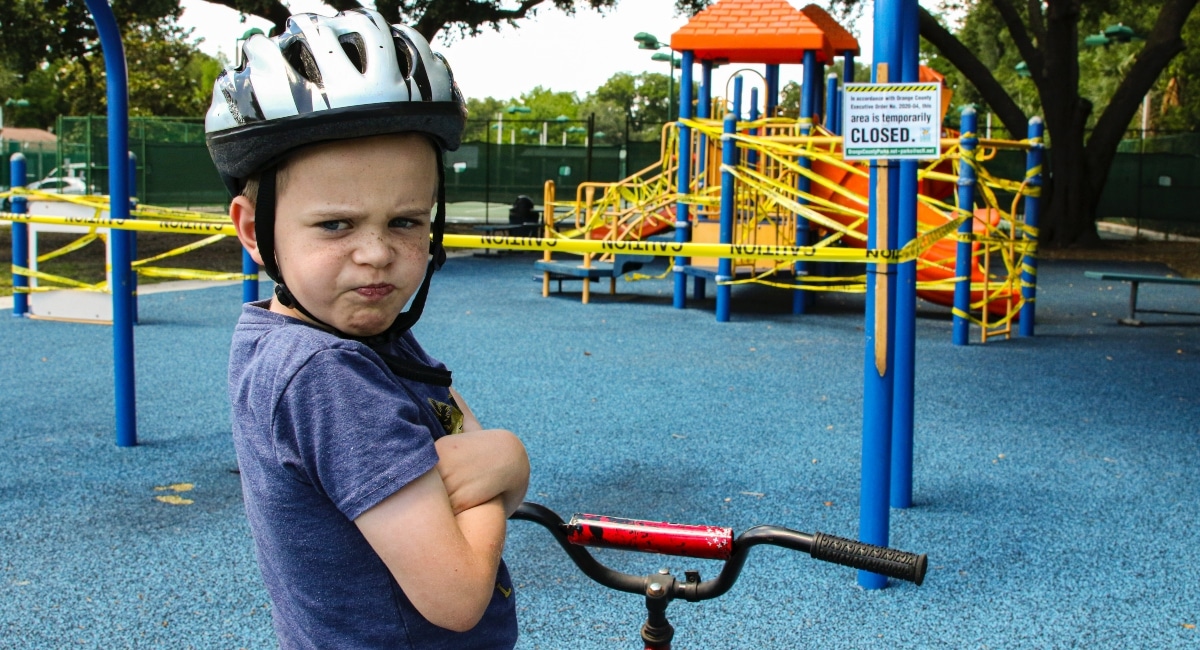Is your child angry? Feel like tantrums are all too familiar emotions in your household? As a paediatric nurse I want to share my advice on bringing peace back to your family.
The world seems to be an angry place these days. A tremendous amount of consultations I’ve had recently have been with parents who are trying to deal with their child’s anger and/or physical aggression.
Being angry is a normal human emotion, but it can become problematic when that anger isn’t channelled into something positive and is allowed to fester.
No matter how old we are, there are times when it is all just too much and we lash out. This may be verbal, it may be bursting into tears or shutting down completely, but when our brains are at saturation point, negative emotions are generally what we end up presenting to the world.
In toddlers, children and teenagers a similar logic applies. They are surrounded constantly by stimuli for all the senses and eventually reach saturation point. Personality traits, age and other diagnoses may cause some children to resort to anger faster than others, but if the right buttons are pushed, almost every child can find their way there.
For parents this can be exhausting, stressful and even frightening. In many cases, it feels like their child is angry all the time.
To help you avoid and manage your child’s anger when it manifests itself, there are five strategies I recommend.

Allow your child sufficient downtime
Sufficient downtime will help reduce your child being angry. No one can function at 100 per cent capacity 100 per cent of the time. Yet, for some reason we seem to expect that of ourselves and our children. She says early mornings are generally a race out the door for families, which includes trying to fit in a huge number of chores in a short period of time.
Children then must function socially and academically all day at school. There are also after school activities, homework and family time. Then it’s another race through a bedtime routine.
There is no time where they are not a slave to someone or something. Most children require some time in their day with minimal human interaction where they can be allowed to be who they are and alone with their thoughts.
For some children it is LEGO building, while others will read. There is also screen time. Regardless of the activity, it should be for 20-30 minutes and an opportunity for them to relax.
Pick your battles
When you know your child struggles with certain chores and has had a full-on day, decide if it is worth forcing them to do that chore. Especially if it is likely to trigger a negative response.
Decide what battles are worth it and for the rest, take a deep breath and ignore. This will help your child to not constantly feel you are picking on them. They are likely to be calmer with you for a while longer.
Opportunities to express feelings or exhibit aggression
It can be tremendously helpful if you are able to pick up on the signs when you child starts to get agitated. Try to help them communicate what they are feeling.
This may be verbal, through visual cues or through play. In some situations, if the anger is becoming a regular pattern, it may be worth thinking about counselling for your child. If you see they are becoming aggressive regularly, enrolling them in a physical activity where they can use that aggression, such as sports or martial arts, may be something to consider.
Clear boundaries
When a child is angry or in a negative headspace, they may try to push any boundaries that you set. This can often be the case if a child feels that too much in their life is out of their control or is regulated by rules they don’t agree with or understand.
Boundaries need to be set clearly, but it is also important not to have too many of them.
Once you decide your non-negotiable rules of behaviour, they need to be enforced consistently. They require clear consequences that your child understands. By doing this, it is then their choice to accept the consequence or to comply with the rule and choice will give them an element of control.

Meltdowns are not always a terrible thing
All behaviours serve a purpose. If your child’s anger escalates to the point where they are screaming or becoming aggressive they are trying to express their frustration and let off steam. It is no different to feeling a lump in your throat when you need to cry and having to hold it in.
It is only by going through this process of melting down that they will be able to calm down enough to be rational and not to fly of the handle at every word you say. Therefore, there are instances where as long as everyone is safe, a meltdown should be allowed to take its course. Then begin the process of calming down properly.
These strategies can help you feel that while your child still may be angry from time to time, it is not a permanent state of being!
About the Author
Ariella Lew is a highly qualified paediatric nurse who established Kids on Track Paediatric Consultancy in 2012. She has worked extensively in both hospital and community settings in Australia, the United Kingdom and South Africa. She brings this experience to families and care givers requiring a bespoke home-based support service.
You might also like…
8 Things to help restore peace in your parenting and at home


